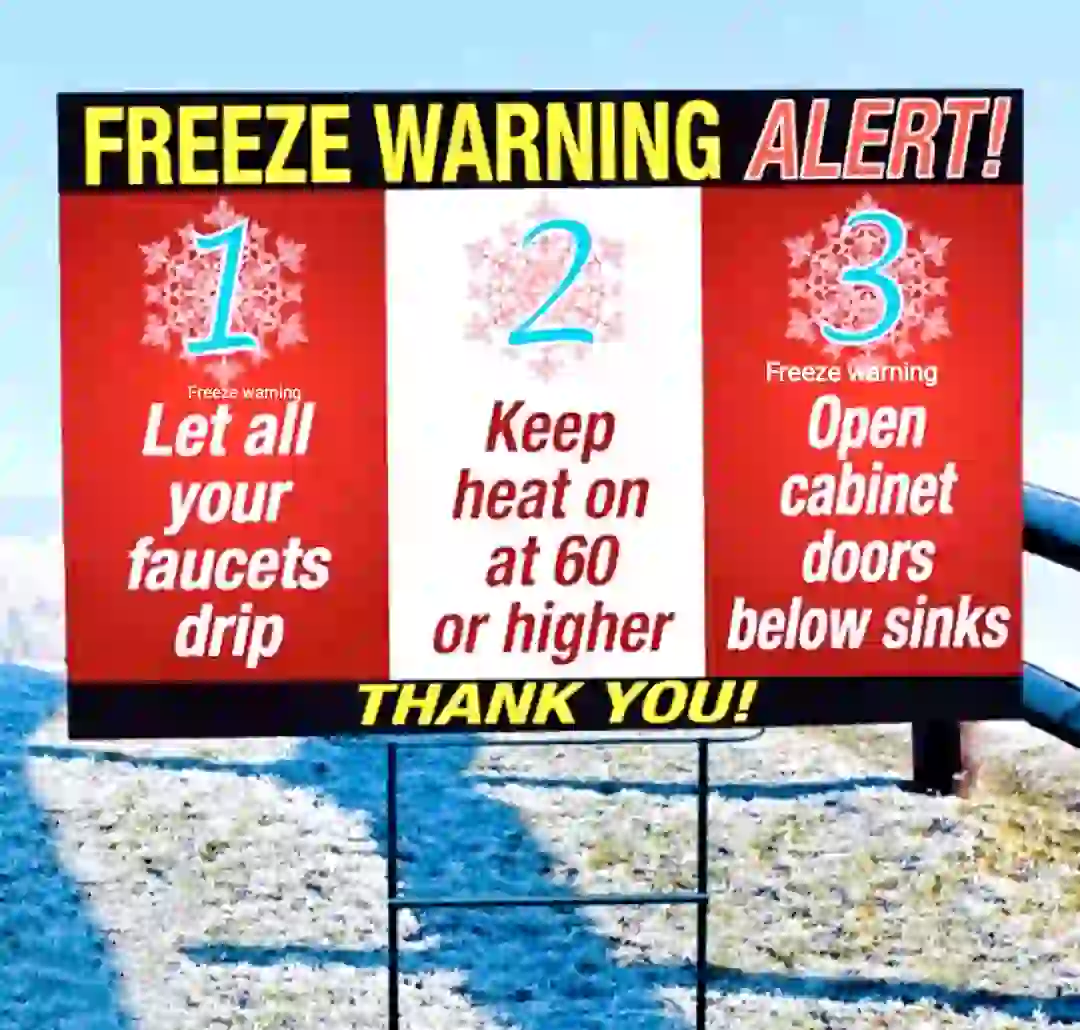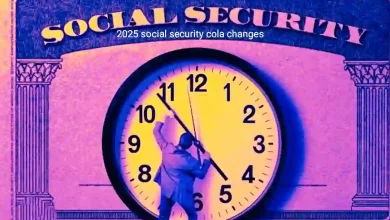The Ultimate Guide to Freeze Warnings: All You Need to Know

When temperatures plummet, especially during late fall and early winter, you might come across weather alerts labeled “freeze warnings.” For many, these warnings can seem insignificant, but they carry significant implications for safety, agriculture, and household preparedness. This comprehensive guide will explore freeze warnings, why they matter, how to prepare for them, and ways to minimize their impact on your life. From farmers to homeowners, knowing how to deal with freeze warnings can make all the difference in protecting your property, garden, and even your health.
Whether you are new to understanding weather advisories or looking to expand your knowledge, this guide covers everything about freeze warnings in depth.
Chapter 1: What is a Freeze Warning?
Table of Contents
1.1 Definition of a Freeze Warning
Meteorological agencies issue a freeze warning when temperatures are expected to drop to 32°F (0°C) or lower for a significant period of time, generally overnight. The primary purpose of these warnings is to alert the public, farmers, gardeners, and those with outdoor water pipes that protective measures should be taken to prevent Damage.
1.2 Freeze Warning vs. Frost Advisory
It’s easy to confuse freeze warnings with frost advisories. While both occur during cold weather, they are issued for different temperature conditions:
- Frost Advisory: Issued when temperatures are predicted to drop to the range where frost is possible, generally between 33°F and 36°F (0.5°C to 2.2°C). Frost can damage sensitive plants but is less severe than a freeze.
- Freeze Warning: Indicates temperatures will drop to 32°F or lower, which can lead to a hard freeze, potentially killing crops and causing significant harm to other unprotected outdoor structures.
1.3 When and Why are Freeze Warnings Issued?
Freeze warnings are typically issued during spring and fall. The reasons vary from protecting agricultural assets to ensuring the general public takes preventive measures for outdoor infrastructure like water pipes and garden tools. Meteorologists use predictive models to determine temperature drops and often give a warning a few days in advance to allow people to prepare.
Freeze warning temperature
The National Weather Service (NWS) issues a freeze warning when temperatures are forecasted to drop to 32°F (0°C) or below for a significant duration, posing a threat to crops and sensitive vegetation.
This warning is typically issued during the growing season to alert farmers and gardeners to take protective measures.
In contrast, a Hard Freeze Warning is issued when temperatures are expected to fall to 28°F (-2°C) or lower for an extended period, which can cause more severe damage to plants and may affect unprotected plumbing.
It’s important to note that the specific temperature thresholds for these warnings can vary slightly depending on regional climate conditions and the local NWS office’s criteria.
Chapter 2: The Science Behind Freeze Warnings
2.1 How Weather Patterns Cause Freezing Temperatures
Understanding what triggers freezing temperatures requires understanding weather patterns, air masses, and temperature inversion. Freeze events are usually associated with the arrival of a cold front or a high-pressure system. High-pressure systems often bring in colder, denser air, and temperatures can drop drastically without cloud cover at night. Clear skies allow infrared radiation to escape into space, leading to ground-level cooling—a phenomenon known as radiative cooling.
2.2 Types of Freezes
- Advection Freeze: Caused by the movement of a large mass of cold air into an area, often bringing drastic temperature drops over a short time.
- Radiational Freeze: Occurs when the heat escapes from the ground due to clear skies and calm winds, typically happening overnight and leading to frost and freeze conditions.
Chapter 3: Risks and Impacts of Freeze Warnings
3.1 Agricultural Impacts
Freezing temperatures can wreak havoc on crops, causing significant financial loss to farmers. Sensitive plants like citrus, strawberries, and tender vegetable crops are particularly vulnerable. Farmers commonly use Frost blankets, irrigation, and heaters to protect crops.
3.2 Home and Garden
Homeowners are also affected by freeze warnings. Outdoor water pipes are susceptible to bursting during a freeze, which can cause costly Damage. Garden plants not adapted to cold temperatures can also suffer or die. Preparing the garden and plumbing in advance is crucial to minimize these risks.
3.3 Safety Concerns
When freeze warnings are in effect, there are increased risks for specific health concerns, including hypothermia and frostbite. People without adequate heating or those who are homeless are particularly at risk. Driving can also be dangerous, as freeze events can create black ice, making roads slick and hard to navigate.
Chapter 4: Preparing for a Freeze Warning
4.1 Protecting Your Garden
- Covering Plants: Use frost cloths or old blankets to cover sensitive plants, especially at night. Ensure the covering reaches the ground to trap warm air.
- Mulching: Add a layer of mulch to the base of your plants. This acts as insulation, helping the soil retain heat.
- Watering: Water the garden in the morning before a freeze event. Moist soil retains more heat than dry soil, offering added protection to plant roots.
4.2 Safeguarding Your Home
- Pipe Insulation: Covering exposed pipes with foam or insulating wraps can help prevent them from freezing. Be sure to drain garden hoses and shut off outdoor water connections.
- Doors and Windows: Close all windows and doors tightly to prevent drafts. Add weather stripping to any gaps where cold air may enter if possible.
- Indoor Preparation: Use indoor space heaters responsibly if temperatures fall too low. Always make sure they are on a stable surface away from flammable objects.
4.3 Car PreparationPreparation
During freeze warnings, cars can also face challenges. Make sure to:
- Check your car’s antifreeze levels.
- Keep windshield wiper fluid topped off with a freeze-resistant solution.
- Store a blanket and emergency kit in your vehicle.
Chapter 5: Freeze Warning Protocol for Farmers
5.1 Evaluating Crop Risk
Different crops have different freezing thresholds. Farmers must assess their crops’ vulnerability to decide whether to employ protective measures such as irrigation or heaters.
5.2 Irrigation Techniques
Overhead irrigation can be effective in insulating crops against freeze damage. By spraying water, a protective layer of ice forms around plants. The latent heat released when water freezes can keep plant tissue temperatures closer to 32°F, preventing ice from forming inside plant cells and causing injury.
5.3 Wind Machines and Heaters
Wind machines are often used during a freeze event to mix warmer air above with cooler ground-level air, raising temperatures by a few crucial degrees. Heaters, although energy-intensive, are sometimes employed to save high-value crops.
Chapter 6: Environmental and Economic Impact
6.1 Economic Losses
Frozen events can lead to significant economic losses, from ruined crops to increased energy bills. The agricultural sector is especially vulnerable, as frost-sensitive crops like fruits, nuts, and vegetables can be destroyed overnight. Damage to residential and commercial property, such as broken pipes, also adds to the economic burden.
6.2 Environmental Consequences
Extended freeze warnings may lead to the loss of flora and fauna that are not cold-tolerant. When cold snaps occur in typically mild climates, plants and animals that have not adapted to extreme cold can suffer. In some instances, entire ecosystems can be disrupted.
Chapter 7: How to Stay Safe During a Freeze Warning
7.1 Dressing for Cold Weather
Layering is essential. Wear several layers of loose-fitting, lightweight, warm clothing rather than a single heavy layer. The air between layers acts as insulation. Make sure to cover all exposed skin to avoid frostbite.
7.2 Shelter Considerations
Ensure that you have adequate heating at home. Portable heaters can help, but they must be used safely—always keep them away from curtains and furniture and never leave them unattended.
7.3 Emergency Preparedness
- Stocking Essentials: Stock up on batteries, non-perishable food, and blankets in case of a power outage. Keep flashlights and battery-powered radios ready.
- Communication Plan: During extreme weather, cell service can be unreliable. Establish a plan with family members for a meeting spot or alternative communication.
Chapter 8: The Role of Technology in Freeze Warning Detection
8.1 Weather Forecasting Tools
Modern meteorology relies on a range of forecasting models to predict freeze events. NOAA (National Oceanic and Atmospheric Administration) provides reliable freeze warnings that use sophisticated computer simulations, satellite images, and historical climate data.
8.2 Smart Home Devices
Smart thermostats and sensors can be programmed to alert you when temperatures fall below a certain point. Some can even automatically adjust your heating settings, preventing pipes from freezing while you’re away from home.
8.3 Agricultural Technology
Many farmers have started using drones and IoT sensors to monitor the temperatures across their fields in real time. Precision agriculture enables farmers to take preventive measures exactly where they are needed most, improving efficiency and saving resources.
Chapter 9: How to Recover After a Freeze Event
9.1 Assessing Damage
- Plants and Crops: Wait until temperatures have warmed up before assessing Damage. Not all plants that appear damaged are dead; new growth can occur.
- Pipes and Infrastructure: Check for leaks or Damage once the freeze has passed. Turn on faucets slowly to ensure that no pipes have burst.
9.2 Cleanup and Restoration
- Remove dead plant material to avoid attracting pests.
- Prune damaged branches from shrubs and trees.
- Have a professional plumber assess the situation for water pipes if you detect issues.
9.3 Learning from the Event
Document what worked and what didn’t during the freeze event. Keeping a record will help you prepare more effectively for future occurrences.
Frequently Asked Questions About Freeze Warnings
What is the difference Between a Hard Freeze and a Light Freeze?
A hard freeze occurs when temperatures drop significantly below freezing for an extended period, usually below 28°F (-2°C). It can kill many types of vegetation and even some types of perennial plants. A light freeze is typically between 29°F and 32°F and can still cause Damage to tender plants, but it might not be as lethal.
Can Freeze Warnings Affect My Pets?
Yes, pets are highly susceptible to cold weather. It’s essential to bring pets indoors during a freeze warning or ensure they have a warm, dry shelter with plenty of blankets to protect them from the cold.
What Are the Best Methods to Protect Outdoor Pipes?
The best way to protect outdoor pipes is to use pipe insulation materials like foam tubes and disconnect and drain garden hoses. Letting faucets drip can prevent pressure from building inside pipes and reduce the likelihood of bursting.
What does a freeze warning mean for driving?
A freeze warning is issued by weather authorities when temperatures are expected to drop below freezing, typically affecting plants, crops, and exposed pipes. For driving, a freeze warning indicates potential hazardous road conditions due to freezing temperatures, which can lead to:
- Black Ice Formation: A thin layer of transparent ice that forms on roadways, making it difficult to see and highly slippery.
- Icy Bridges and Overpasses: These areas freeze faster than regular roads due to the surrounding air underneath, increasing the risk of skidding.
- Reduced Traction: Tires may have less grip, especially on untreated roads.
Safety Tips for Driving During a Freeze Warning:
- Drive slowly and maintain a safe distance from other vehicles.
- Avoid sudden braking or sharp turns.
- Be extra cautious on bridges, overpasses, and shaded areas where ice is more likely to form.
A freeze warning suggests you should be more cautious, as road conditions can rapidly become dangerous due to ice.
Conclusion
Freeze warnings are critical alerts that require attention, preparation, and action. From agricultural impacts to home maintenance, understanding the severity of a freeze warning and how to respond can help save money, reduce Damage, and ensure safety during the coldest times of the year.
Proper Preparation, innovative use of technology, and knowing how to respond are critical aspects of minimizing the risks of freeze warnings. Whether managing a farm, maintaining a home, or simply looking to keep your family safe, this guide provides comprehensive advice to stay ahead of the freeze and mitigate potential damages.



